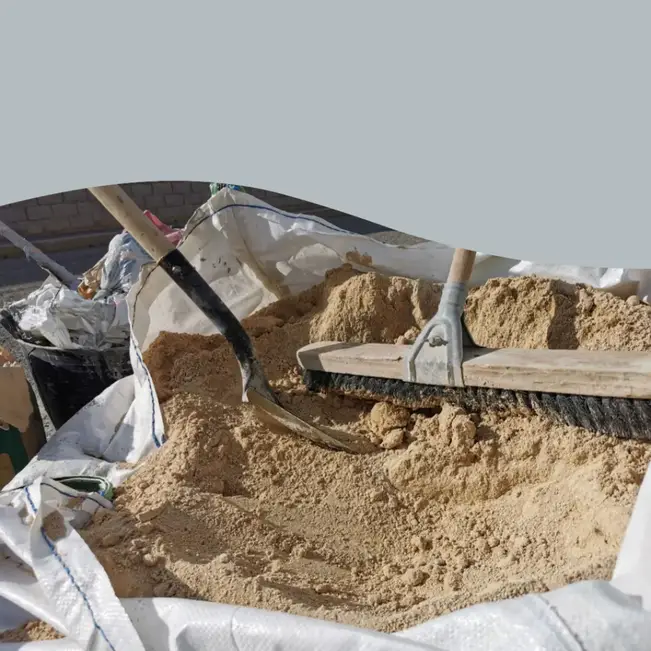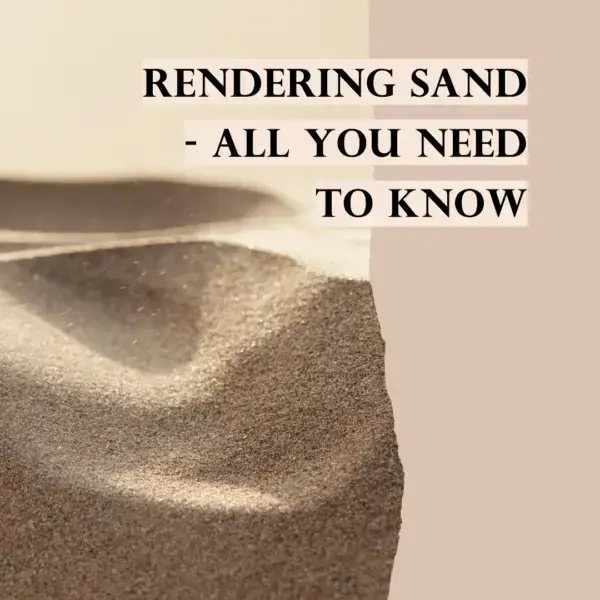Rendering sand is a specific type of sand that possesses the ideal properties for creating high-quality renders and mortars.
This fine-grained sand is typically sourced from quarries, riverbanks, or coastal areas and is meticulously graded to ensure uniformity in particle size.
It’s a vital component in construction, providing protection, insulation, and a decorative finish.
Render is composed of various materials, including sand, cement, lime, and sometimes additional additives, depending on the desired properties.
What sand do you use for rendering?
Typically plastering sand is used for rendering, however other sands such as sharp sand and lime are also often added.
What other types of sand can be used for rendering?
- Sharp sand: This is also known as grit sand, concreting sand or zone 2 grit sand. It has a coarse texture and has larger particles. It produces a course finish and is suitable for most rendering jobs. It is durable and resistant to weathering.
- Silver sand: This is also known as soft sand or white sand. It is very fine and contains no impurities. It produces a smooth finish. It cost more, so is not used as much as other sands.
- Building sand: This is also known as soft sand, has a fine texture and leaves a smooth finish. Lots of builders use building sand instead of plastering and is suitable for most types of rendering. It is not as durable or resistant to weathering as other sands.

When buying sand for rendering sand you should buy a sand bulk bag where possible as this will reduce the cost.
Render Calculator K Rend Calculator
The Importance of Quality Rendering Sand
Achieving Optimal Texture and Finish
One of the primary reasons for using high-quality rendering sand is to achieve an impeccable texture and finish on your building surfaces. The even distribution of fine particles in rendering sand ensures a smooth and uniform surface, eliminating unsightly blemishes and imperfections.
Enhancing Structural Integrity
Rendering sand is not merely about aesthetics; it also contributes significantly to the structural integrity of a building. When mixed with cement and other additives, it forms a robust mortar that adheres securely to the underlying substrate. This enhances the strength and durability of the structure.
Factors to Consider When Choosing Rendering Sand
Particle Size Distribution
The particle size distribution of rendering sand is a crucial factor to consider. Fine sand particles, typically in the range of 0.1 to 0.5 millimeters, are preferred for rendering purposes. This ensures excellent workability and a smooth finish.
Sand Purity
Render sand should be free from impurities such as silt, clay, and organic matter. Contaminants can adversely affect the bonding properties of the mortar and compromise the quality of the render.
Grading
A well-graded rendering sand contains a balanced mix of coarse and fine particles. This ensures that the mortar has adequate cohesion while still allowing for good drainage and breathability.
Compatibility with Additives
Rendering sand should be compatible with the cement and additives used in the mortar mix. Compatibility ensures that the mortar cures properly and adheres well to the substrate.
The Process of Rendering with Sand
The application of rendering involves several steps:
- Surface Preparation: Before applying render, the surface must be cleaned, primed, and, if necessary, repaired to ensure a solid base.
- Mixing: The sand is mixed with cement and water in precise proportions to create a workable mortar.
- Application: The mortar is applied to the surface using trowels or rendering machines, with careful attention to achieving an even thickness and texture.
- Finishing: The final finish is achieved by smoothing the surface with appropriate tools, creating the desired texture.
FAQ’s
What is the best sand for rendering?
The best sand to use for rendering is plastering sand mixed with other sands, lime and cement. Plastering sand is a mixture of different sands such as sharp, silver and building sand mixed for its specific application.
Can you use sharp sand for rendering?
You can use sharp sand for rendering although I recommend using plastering sand and adding sharp sand as required to ensure you get the desired finish.
Conclusion
Rendering sand is a versatile material that enhances the durability, aesthetics, and insulation of surfaces. Whether you’re renovating your home or working on a construction project, understanding the nuances of rendering sand is crucial for achieving exceptional results. Follow the outlined guidelines and best practices to ensure your rendering project is a success.
Author Profile

- I have many qualifications and certificates in construction, such as City & Guilds, CPCS and CITB. These are the highest standards of training and competence in the industry. Whether you need help with plumbing, carpentry, bricklaying or any other trade, I’m here to help you succeed.
Latest entries
- March 6, 2024CalculatorsWall Tile Calculator: How Many Wall Tiles Do You Need
- February 29, 2024Roof Truss Cost Calculator
- December 31, 2023Wage Take Home Calculator
- December 30, 2023Day Rate Calculator

